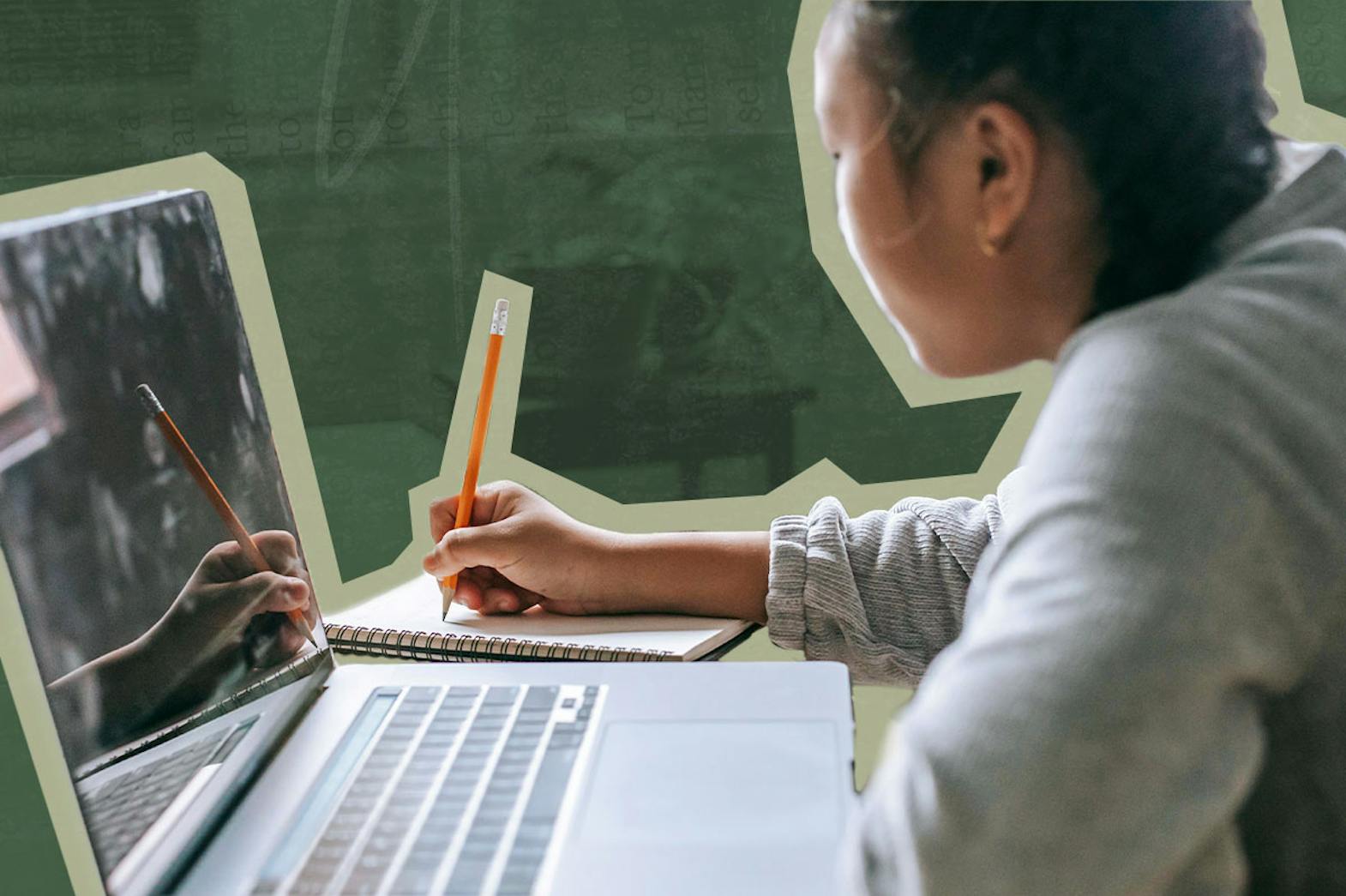In a world where digital exposure is constant, creatives are often the first to feel its weight.
The stories, images, and emotions that pass through our screens each day shape how we design, write, connect, and feel in an ever-evolving digital world. Behind every piece of creative work lies an unseen effort to remain open, empathetic, and well in a time of constant information.
As the boundaries between technology, storytelling, and emotional well-being continue to blur, the responsibility of creative professionals is more relevant than ever.
At Narratives, we work to design with awareness, communicate with care, and model what trauma-informed creative practice can look like in a digital world.
Our Expression and Connection team reflects on what it means to work, design, and create amid constant connection. Together, their reflections showcase creative leadership: one that values presence over pace, empathy over output, and connection that heals rather than harms.

Jensen Budd
Videographer
These days, everyone is a content creator.
We are in an age of creation where the ability to mass-produce media is no longer limited to those with studio approval and funding. Cameras and microphones are attached to nearly every smartphone. Photo and video editing software are integrated into free social media apps. With this, anyone can learn how to share their voice. Text, voice, video, animation, photographs, melodies, poems, coding, design; creation of media has never been more accessible.
Such technology allows for connection across borders and communication across the world. Creativity blooms in the diverse sharing of life: ideas, beliefs, traditions, worldviews, and interests. We are gifted wisdom from knowledge keepers of countless cultures and lived experiences. We seek comfort from those in other continents, making friends across the globe. We can reach farther across the world than we ever have.
But because of this reach, even in the quiet when we are tired and drained from the day, we are still having conversations with others. We hear people’s opinions while we are cooking dinner, and see people suffering while we procrastinate sending an email. People speak ill of lifestyles through our earbuds on the bus, and weep to us about their troubles during our lunch break. Politicians across the globe speak past us, and their citizens cry to us, while we sit at the dinner table. We lie alone in our bed, surrounded by the voices, panic, fear, criticisms, and woe of the world. We are connected to everyone, everywhere, all at once. And we are incentivized to remain so.
This is digital exposure. When so many voices carrying so many kinds of grief pass through our senses every day, it can feel impossible to turn down the volume. Anxiety, paranoia, depression, obsessions, mania, impulsivity, self-loathing, and grief are all possible results of carrying such a heavy load.
I am one of the voices taking space in your life today. And as a creator who is speaking to you, or to anybody, I have a social responsibility, just as I have a social responsibility when interacting with people at my workplace, or out at the grocery store. Every creator, large or small, shares this responsibility: to think before speaking and doing.
When we, as creatives, are mindful of our messaging and speak with empathy for an audience we have not yet met, we can create moments of peace for those who may need it. And when we recognize our triggers when receiving messages and uphold our boundaries in response, we become better equipped to use the gift of worldwide connection for good by creating connections rather than discord.
The eye of a hurricane is a welcome moment of peace in the midst of a storm. By continuing to be aware, thoughtful, and empathetic, both to others and to ourselves, we can create a space of clarity, one that the storm cannot destroy.

Feabie Medina
Graphic Designer
In this era of digital technology, news and media can be accessed at the touch of a finger, any time, anywhere. As creatives, this constant stream of information isn’t just a casual scroll; it defines the stories we carry forward. But as we shape these stories, how often are we looking out for the emotional toll that comes with processing and translating them?
Creatives today are immersed in this digital era where images of climate disasters, injustice, and grief are constantly circulated. We encounter these topics daily through our research or just by the algorithm of our feeds. This constant exposure to distressing content can lead to emotional fatigue and vicarious trauma, the psychological impact of being indirectly exposed to others’ traumatic experiences or suffering.
To maintain creative integrity, we can counter the negative effects of digital exposure by integrating mindful and reflective practices into our everyday workflow. This can look like scheduling breaks between heavy projects, planning regular check-ins with colleagues, or simply reminding oneself that design isn’t about fixing the world alone. In acknowledging the impact of vicarious trauma, we create space for healthier and more trauma-informed design processes.
As the pace of digital media accelerates, the future of creative work begins with our ability to slow down.


Fiona David
Illustrator | Graphic Designer
Before social media, artistic validation could be as simple as a parent pinning pencil-scribbled pieces on the fridge. Art was created and shared wholeheartedly, free from the need to appease algorithms. Today, being a creative professional means navigating a digital landscape where designers, illustrators, and artists can gain recognition through posting their work online. It can foster a community where inspiration, collaboration, and connection flourish. On the other hand, it can also lead to constant comparison and the ever-mounting pressure to produce.
Scrolling through streams of other artworks can wilt inspiration into envy and turn making into something mechanical. A quiet path to creative burnout. Creativity becomes less about authentic expression and more about quick output and chasing metrics. When we get stuck in cycles of self-doubt, burnout, and the pursuit of likes and engagement, we risk abandoning the pure passion for creating.
Choosing digital rest or mindful disconnection helps us reconnect with that early love for creating, nurturing patience and kindness toward the inner child who first reached for the pencil. By mindfully disconnecting, we release ourselves from the grip of expectation and return to that gentle, wholesome instinct to create. In the stillness, we can come home to the same joy that made fridge doors into our first galleries.

Hannah Cole
Senior Designer
As designers, our work extends beyond aesthetics and functionality. We shape experiences that influence how people feel, think, and engage online. In a world overflowing with information, there is a fine line between creating content that overwhelms and content that supports thoughtful, meaningful engagement. Approaching our work through a trauma-informed lens amplifies this responsibility: we must consider how our designs and messages may affect those navigating distressing or triggering content, helping to prevent the likelihood of (re)experiencing trauma online.
Information overload, or digital fatigue, is tangible and manifests as stress, distraction, and burnout. Recognizing this, we prioritize intentional design and thoughtful content curation. At Narratives, we understand that every post, share, or comment shapes the digital world, and we strive to set an example for peers and audiences by engaging ethically and empathetically. The digital spaces we create can either foster safety and trust or amplify stress and disconnection.
Being able to feel safe with other people is probably the single most important aspect of mental health; safe connections are fundamental to meaningful and satisfying lives.
Mindful technology use and digital minimalism are principles we embed into our processes. Mindful engagement encourages intention over habit, while digital minimalism reduces unnecessary cognitive load. By integrating these approaches, we create digital experiences that respect the mental and emotional well-being of all users.
As creatives, we must consistently reflect on how our expertise can guide the industry toward more considerate, impactful practices. By embedding trauma-informed thinking into our work, we move closer to creating digital environments that are purposeful, empathetic, and sustaining for everyone.

Brandon Klein
Motion Graphics Designer
Design and digital media are more than visual communication. Every post, frame, or motion we create becomes part of the atmosphere people navigate online. It’s about crafting spaces that feel grounded, intentional, and safe to engage with.
In a digital world that never stops moving, people are constantly absorbing more than they can process. The result is often quiet exhaustion, a kind of background noise that dulls attention and empathy alike. As designers, we must ask ourselves, “Are we adding to the noise, or creating room for people to breathe?”
Trauma-informed design begins there, in awareness. It recognizes that behind every click is a person bringing their own story, stress, and emotional load.
Every creative decision, even the smallest choices, whether it’s the design direction, colour grading, pacing, or tone, can either amplify tension or offer calm. Designing with empathy means building for real human beings. Every choice we make contributes to the emotional climate of the digital world.
We often think of our role as “filling” space, delivering value, grabbing attention, and building engagement. But sometimes our job is to shape space instead. To slow the scroll. To soften the edges. To create a pause long enough for someone to feel seen instead of sold to.
The digital world doesn’t need more noise; it needs more moments of ease. When we design with care, we remind people that there’s still room online for reflection, for breath, and for a bit of human warmth between the pixels.
We believe creative work carries a responsibility beyond aesthetics; it shapes how people experience the world. Trauma-informed creative practice guides us to design with empathy and awareness, creating digital spaces that support well-being and meaningful connection.




